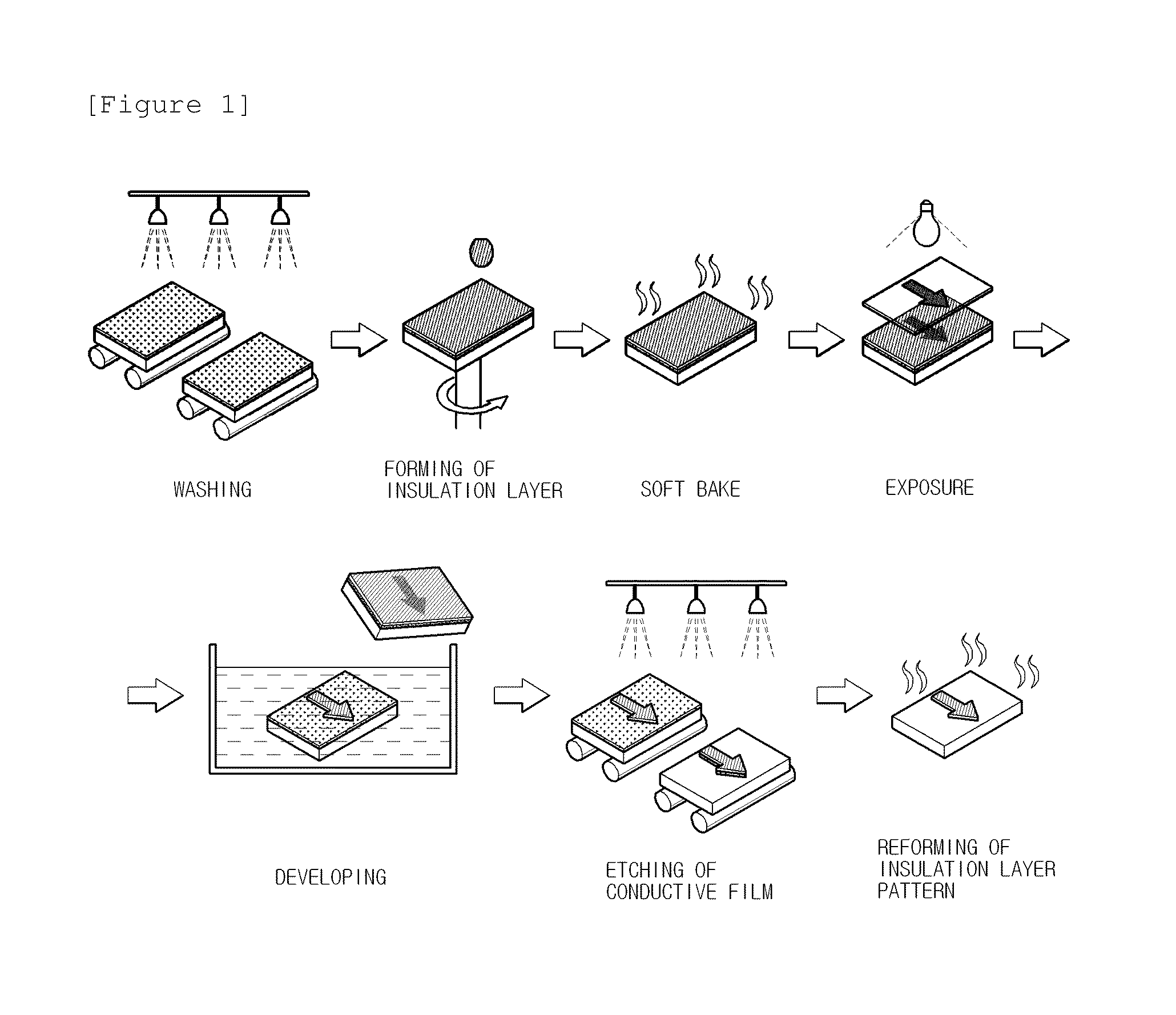Method for manufacturing insulated conductive pattern and laminate
- Summary
- Abstract
- Description
- Claims
- Application Information
AI Technical Summary
Benefits of technology
Problems solved by technology
Method used
Image
Examples
example 1
[0092]The chrome layer having the thickness of 300 nm was formed as the conductive film on the glass substrate by the deposition method. Subsequently, the insulation layer pattern having the width of 60 micrometers and the pitch of 5 mm was formed by adding the novolac resin composition (trade mark: LG412DF, manufactured by LG Chem, Ltd., in Korea) on the chrome layer by using the photolithography method. The soft bake was performed in respects to the insulation layer by maintaining the temperature at 107° C. during the process for forming the insulation layer pattern by using the photolithography method.
[0093]The chrome layer was patterned by using the insulation layer pattern as the mask. In this case, trade mark CE-05E manufactured by EXAX, Co., Ltd., in Korea was used as the etching solution. The width of the upper part of the chrome layer pattern manufactured by the method was 57 micrometers and the taper angle was 18°.
[0094]The substrate including the insulation layer pattern ...
example 2
[0095]The same method as Example 1 was performed, except that LG412DF to which the surfactant was added and the PGMEA / EtOH mixed solvent (mixing weight ratio 7:3) were mixed in the solid content of 13 wt % and used as the material of the insulation layer pattern, and the reverse offset printing method was used instead of the photolithography method as the method for forming the insulation layer pattern. The electronic microscopic pictures of the upper surface and the lateral surface of the resultant material formed by this are shown in FIG. 5.
example 3
[0096]The same method as Example 1 was performed, except that silver was used instead of chrome as the material of the conductive film. The reflow shape as shown in FIG. 4 and measured in Example 1 could be obtained.
PUM
| Property | Measurement | Unit |
|---|---|---|
| Fraction | aaaaa | aaaaa |
| Angle | aaaaa | aaaaa |
| Angle | aaaaa | aaaaa |
Abstract
Description
Claims
Application Information
 Login to View More
Login to View More - R&D
- Intellectual Property
- Life Sciences
- Materials
- Tech Scout
- Unparalleled Data Quality
- Higher Quality Content
- 60% Fewer Hallucinations
Browse by: Latest US Patents, China's latest patents, Technical Efficacy Thesaurus, Application Domain, Technology Topic, Popular Technical Reports.
© 2025 PatSnap. All rights reserved.Legal|Privacy policy|Modern Slavery Act Transparency Statement|Sitemap|About US| Contact US: help@patsnap.com



